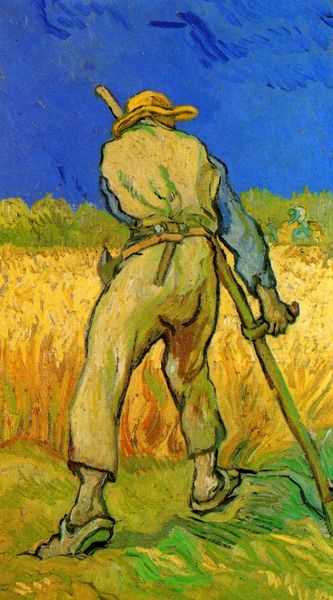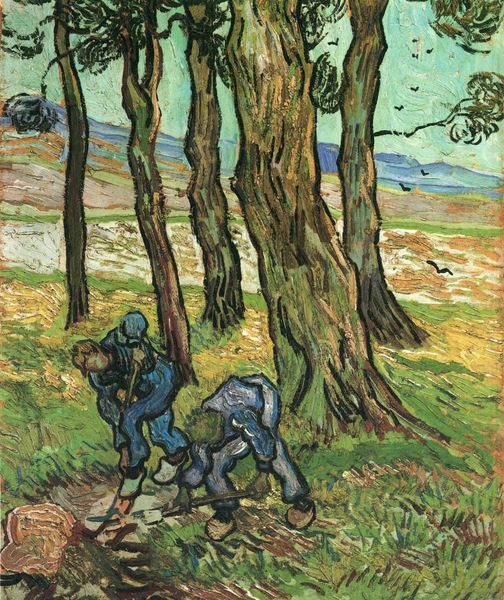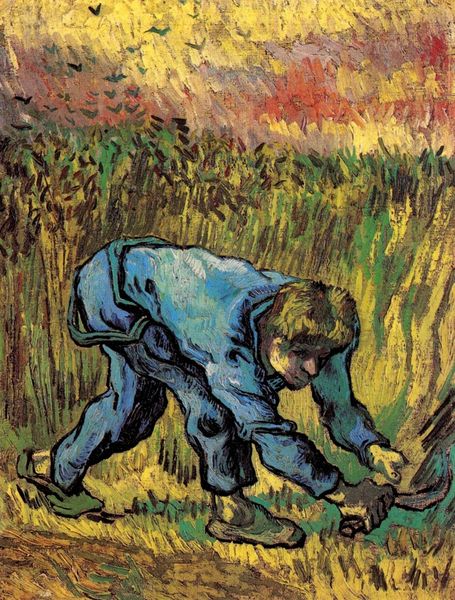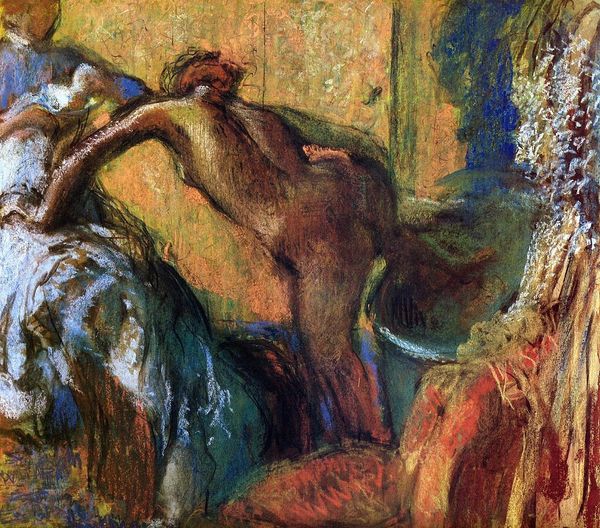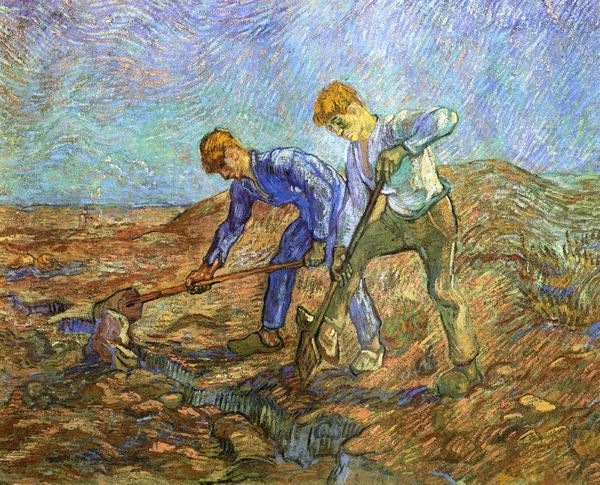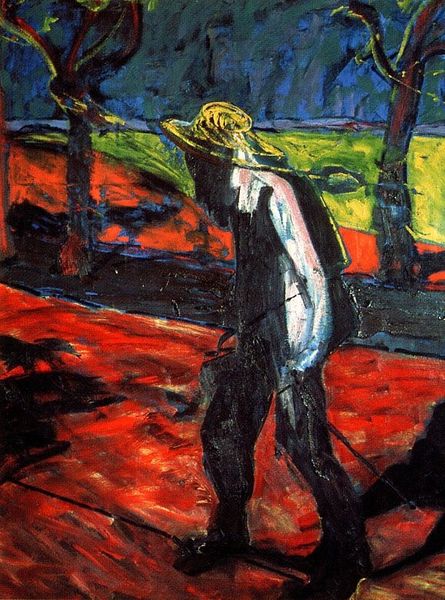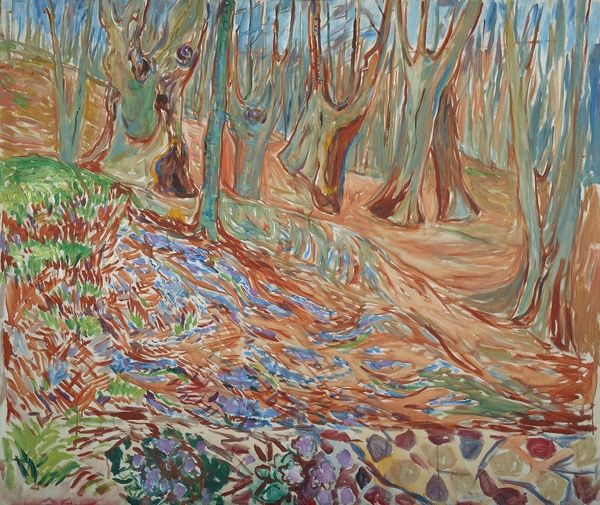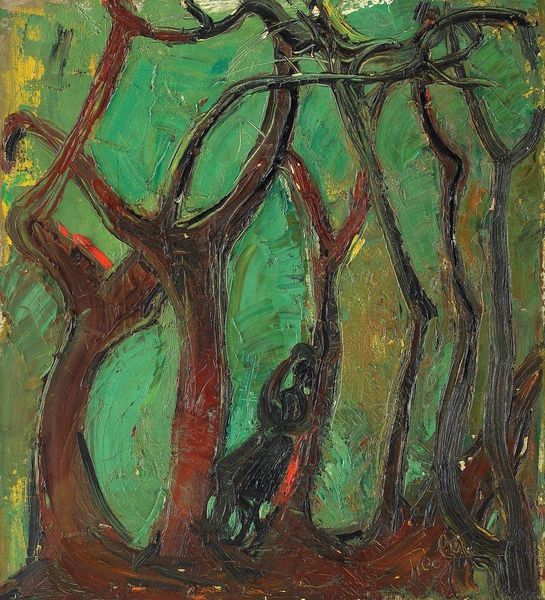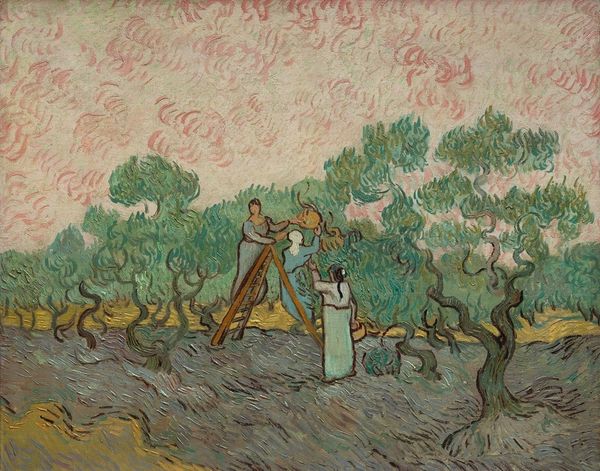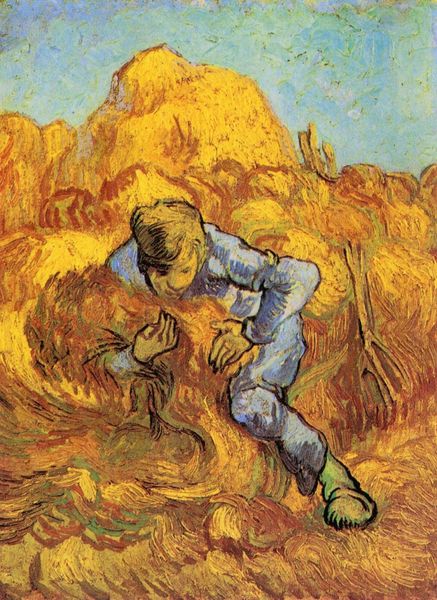
oil-paint
#
tree
#
oil-paint
#
landscape
#
figuration
#
oil painting
#
forest
#
expressionism
#
genre-painting
#
post-impressionism
#
expressionist
Dimensions: 43.5 x 25 cm
Copyright: Public domain
Curator: Before us is Van Gogh's 1890 painting, "The Woodcutter after Millet," currently held at the Van Gogh Museum. Editor: The first thing that strikes me is the intensity of the brushwork. There is a tangible feeling of the man's labor, captured through these energetic strokes of paint. Curator: Indeed. Van Gogh’s admiration for Millet is evident in this work. The figuration here clearly embodies Millet’s genre-painting of rural labor. It also shows Van Gogh's stylistic translation: How would you consider his material approach? Editor: Looking closely, it's about how Van Gogh reinterprets that labor. The visible, textured paint almost suggests a building or sculpting of form as opposed to purely representing. I see this materiality itself becoming part of the artwork's message about physical exertion. What meaning can we draw from this relationship of artistic work, to woodcutting? Curator: Absolutely. There’s a layering of representation and reference, and the visible paint strokes build both the image and draw the eye. Consider that, for Van Gogh, copying Millet's compositions was an exercise in finding a path and, critically, provided structure during his stay at Saint-Rémy. Editor: The choice of oil paint is critical to this too. The ability to rework and build up layers gives an honesty to his process that might be missed if it were a quicker medium. It invites an intimacy: here is the hand, and toil, right here. Curator: Furthermore, the rhythmic pattern of strokes seems to echo the woodcutter's own movements. He transforms observation into his particular expressionist visual language through repetition and brushwork that is not simply mimetic but interpretative. Editor: Seeing it from this angle enriches the work; I came in seeing just labor, and I leave considering process and reverence—layered upon the work of cutting. Curator: I agree completely; examining both Van Gogh's technique and reference opens up new understandings.
Comments
No comments
Be the first to comment and join the conversation on the ultimate creative platform.
